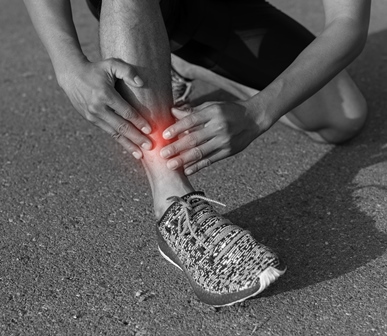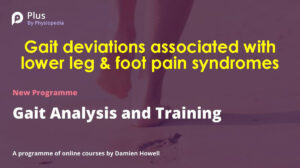Gait Analysis – Examination and Treatment of Shin Splints

The manner in which you walk or run can be a factor contributing to a repetitive use injury of the lower extremity.
Pain in the lower leg, commonly called shin splints, occurs in response to a variety of activities including dancing, jumping rope, walking, and running. Novice runners and individuals with poor fitness level frequently experience shin pain. An in-depth review of the scientific literature on this topic found thirteen different movement faults related to the development of shin splints. These movement faults can be identified using slow motion video gait analysis.
Movement faults which are easy to recognize are excessive pronation of the hind foot or excessive pronation of the forefoot. Movement faults which are more challenging to recognize are a rapid re-inversion or supination of the foot, a prolonged amount of time the heel is in contact with the ground (excessive dorsiflexion of the ankle), and excessive adduction (inward movement) of the leg. Excessive inward movement of the leg can be seen looking at the walker or runner from behind, there will be a lack of space or daylight between the knees (knee knocking) or the foot will cross the mid-line of the body. Describing the thirteen movement faults in layman’s terms is beyond the scope of this short article. Working with a healthcare professional skilled at using slow motion video gait analysis can determine if you’re walking or running form demonstrates one of the thirteen movement faults.
Identifying a movement fault provides an exciting opportunity to alleviate or decrease the symptoms through conscious correction of the manner in which you move when walking or running. If conscious modification of walking or running form decreases or alleviates the symptoms it provides compelling direction in order to treat and alleviate the problem.
Several of the thirteen movement faults cannot be corrected solely with conscious modification of movement. Modification or correction of the movement fault may require modification of equipment such as adding a shoe insert, changing the model of shoe, or remedial strengthening exercises.
Movement faults that occur when walking or running can often be explained by lack of talent or insufficient practice of ideal form. An example is taking too long of a stride. However movement faults may occur because of underlying anatomical or structural issues. An example is an individual is born with a minor hip dysplasia would likely demonstrate odd movement patterns when walking or running. Visualization and recognizing movement fault using slow motion video gait analysis can help problem solve whether clinical examination is needed in order to identify anatomical and structural issues.
It is important to recognize that the manner in which an individual walks or runs can be just one of several factors contributing to the development of shin pain. A thorough examination and analysis can identify mistakes in terms of progression of amount of walking or running, specific muscles weaknesses, and possible areas of inflexibility which also need to be addressed.
The process of reviewing the scientific literature to identify specific movement faults related to the development of specific repetitive use injuries, and than using slow motion video analysis to identify an individual’s movement faults in order to provide direction for individualized intervention is a sound approach to solving problems related to repetitive use injuries.
Bottom line:
- There are 13 different movement faults related to the development of shin splints
- Slow motion video analysis can identify an individual’s movement fault
- Knowing which movement fault is occurring provides direction to most appropriate treatment
Example: This subject suffered with right shin pain, notice movement fault of excessive medial rotation of lower leg on the right side

A on demand-video webinar exploring this topic is available at Plus by Physiopedia entitled “Gait deviations associated with lower leg & foo pain syndromes”.
Use this code – “Damien30” for a 30% discount to access this webinar as well as the more than 500 continuing education webinar courses available at Plus by Physiopedia. This is the link http://bit.ly/DAMIEN30 with the 30% discount code embedded
Damien Howell Physical Therapy – 804-647-9499 – Fax: 866-879-8591 At-Home, At Office, At Fitness Facility – I come to you, I do home visits Damien@damienhowellpt.com

